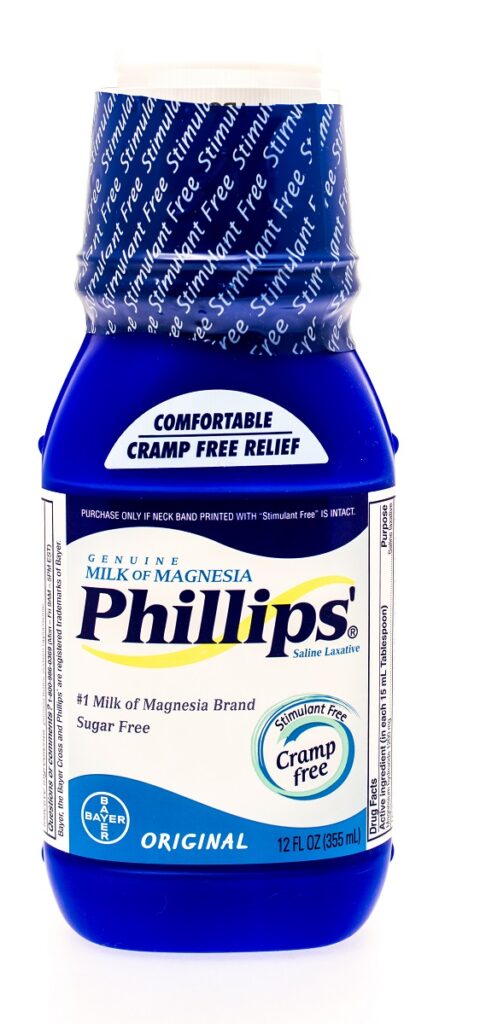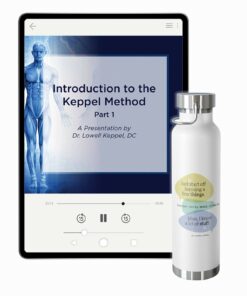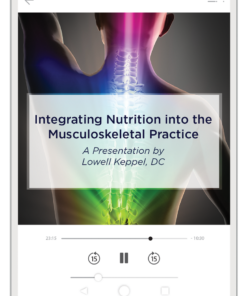Enjoy the latest installment of Dr. Lowell Keppel’s Tip of the Month series by Dr. Royal Lee for practitioners.
During the late 1950s and into the 1970s, Standard Process published the Applied Trophology newsletter. To this day, it remains an important resource full of exceptional information for the practitioner. One of my favorite recurring features in the newsletter is the “Tip of the Month” from Dr. Royal Lee, which ran from 1957 to 1960.
Let’s look at what Dr. Lee shared with us in 1960. Sadly, this was to be the last year that Tip of the Month was included in the newsletter—which means this is my last opportunity to share them with you. I have received so many emails and text messages letting me know you have enjoyed Dr. Lee’s tips as much as I have!
Tip of the Month (Achlorhydria)—January/February 1960
“Clinical results to date indicate the importance of Zypan in the treatment of achlorhydria. Hydrochloric acid deficiency is aggravated by antibiotics, penicillin, fluorides in drinking water, and protein putrefaction. Two tablets after each meal is a good initial dosage. Manganese Phytate-B12 [Manganese B12] and Ostogen (Biost) tablets are synergistic. Vermidase [Zymex II] capsules may also be added for immediate results to improve protein digestion.”
Like many of you, Zypan was one of the first products I learned to use. And of course I got fabulous results! Ever wonder how Dr. Lee came up with a name like “Zypan”? Well, check this out: enZYmes of the PANcreas. ZY-PAN!
What makes this product special is how Dr. Lee combined the protein metabolism effects of betaine hydrochloride and pepsin—the dynamic duo of digestion! According to this tip, achlorhydria (lack of hydrochloric acid in the stomach) results from antibiotics and fluoride in our drinking water. Do your patients ever take antibiotics and/or drink tap water? Yes, all of them.
Click here for the complete January/February 1960 issue of Applied Trophology.
Tip of the Month (Increase Hearing)—March 1960
“One Minaplex [Organically Bound Minerals] tablet has been known to increase hearing one or more decibels soon after administration.”
Nice! As Dr. Lee notes, one tablet of Organically Bound Minerals—just one—can increase hearing. Wouldn’t it be fun to try this out in an audiologist office? It works thanks to potassium’s positive impact on our ability to hear.
Once again, Dr. Lee was before his time. Though this tip is from way back in 1960, it was bolstered as recently as 2019 in a research study on the link between a high-potassium diet and hearing. As the researchers conclude, “High potassium intake levels were associated with a lower prevalence of HL [hearing loss] and lower hearing thresholds in the Korean adult population.”
Click here for the complete March 1960 issue of Applied Trophology.
Tip of the Month (Pernicious Anemia)—April 1960
“Remember that pernicious anemia not only manifests as low red blood cell count but also as neurological symptoms (numbness and tingling of the hands and feet). Whereas folic acid seems to have some merit in raising the red blood count, it apparently does nothing to normalize the neurological symptoms. Important for the nerve symptoms is the B12 complex (J.A.M.A., Vol. 158, No. 12, p. 1003).
“The natural B12 in our vitamin B12 is in combination with the intrinsic factor (from stomach parenchyma). This makes it very readily absorbed orally. Folic acid is deliberately left out of this formula, since it has been found to confuse the issue in the pernicious anemia patient.
“Ferroplus, or Ferrofood, is synergistic and may be supplied by our affiliated companies.”
Pernicious anemia, a decrease in red blood cells, occurs when the intestines cannot properly absorb vitamin B12.
With Cataplex B12, Dr. Lee was the first to make an oral version of B12. To this he also added the intrinsic factor essential for B12 absorption, stomach parenchyma. As stated in index of Dr. Lee’s Products Bulletins, “The stomach parenchyma is undoubtedly an important factor in our opinion.”
Working synergistically with Cataplex B12 is Ferrofood, one of the first formulas designed by Dr. Lee to include a protomorphogen (PMG)—in this case spleen PMG. With Ferrofood and Cataplex B2 together, you can address a variety of anemia situations with a great result.
Click here for the complete April 1960 issue of Applied Trophology.
Points of Interest (Urate Calculi)—May 1960
It would be another six months before Dr. Lee’s final Tip of the Month appeared in the combined November/December 1960 issue of Applied Trophology. But before we get to it, I would like to highlight his “Points of Interest” installment from the May issue. In it, Dr. Lee quotes from a J.A.M.A. article that studied the impact of lemon juice on uric acid stones.
“The following news item falls into the category of cherry juice in the treatment of gout (see ‘Cherry Diet Control for Gout and Arthritis,’ by L.W. Blau, reprint free upon request). From J.A.M.A., 128/78, January 2, 1960:
“Solution of Urate Calculi – At the meeting of the Society of Physicians in Vienna on October 30, B. Bibus reported that by chance the observation was made that large urate calculi in the renal pelvis, which might have been considered an indication for surgical removal, could frequently be dissolved by the administration of one or two lemons daily, given in the form of lemonade, for several months. The success of this therapy was checked by roentgenograms. In addition to therapy with lemons, a purine-free diet was prescribed, and the patient was advised to refrain from the ingestion of alcohol…In patients with chronic recurrent calculus formation in the ureters, it was possible to obtain prompt relief with the lemon diet, provided the calculi were of the urate type.”
The combination of protein foods cooked with sugar can cause the formation of uric acid stones. (Pasteurized milk is a perfect example of this poor dietary combination.) Cyruta Plus, which contains buckwheat, can inhibit the formation of these stones with bioflavonoids that prevent the development of xanthine oxidase, the enzyme responsible for uric acid.
Other acids, such as apple cider vinegar, Cal-Amo, and Phosfood Liquid, can also help break down the crystals.
Click here for the complete May 1960 issue of Applied Trophology.
Tip of the Month (Milk of Magnesia)—November/December 1960
“Milk of magnesia (magnesium hydroxide and water) is poisonous to plants and, like aluminum, has the same antidote—silica (Soil Science, Vol. XIX, 1925, p. 331).
“Apparently, it is the affinity of milk of magnesia for silica that causes the capillary fragility, in this instance, as silica is an integral part of the vascular walls and is necessary to furnish the elasticity to combat vascular fragility.
“Lancet, London, 2:167–218, July 23, 1960, Partial Index:
-
- ‘Extradural Hematoma,’ W. McKissock and others, p. 167
- ‘Effect of Food, Alcohol, and Hyoscine on Body Temperature,’ W.R. Keating and M. Evans, p. 176
- ‘Syndrome of Magnesium Deficiency in Man,’ S. Hanna and others, p. 172
- ‘Blood Pyruvate and Lactate Response to Sugars,’ C. Dodds and others, p. 178
- ‘Antenatal Determination of Fetal Sex,’ P. Rife and F. Fuchs, p. 280
“Note: We believe use of milk of magnesia to be one of the most common causes of nosebleed. —R.L.”
This Tip of the Month is so different from the others. It is not about any Standard Process product but rather a warning about the results of using a synthetic product like milk of magnesia. But of course Dr. Lee still gives us the “antidote” to the problem: silica. This substance is naturally occurring in Organically Bound Minerals, meaning it would not be necessary to measure it or list it on the label.
Click here for the complete November/December 1960 issue of Applied Trophology.
That concludes Dr. Lee’s Tip of the Month. I trust they have given you more insights into ways to help your patients better and faster. Remember, every case you see has a nutritional component!
And results refer!
Images from iStock/Thomas-Soellner (main), memoriesarecaptured (milk of magnesia).






